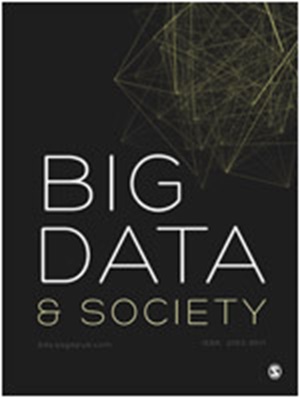关于样本、数据及其在生物银行中的流动性:想象的旅行如何帮助将样本和数据联系起来
IF 6.5
1区 社会学
Q1 SOCIAL SCIENCES, INTERDISCIPLINARY
引用次数: 1
摘要
生物银行涉及样本和数据的收集、管理和分发。虽然样本和数据之间的关系通常被视为生物库的定义属性,但一些研究指出了在实践中将它们联系起来的挑战。本文研究了如何在实践中对样本和数据进行策划、连接和移动。在分析奥地利五家医院生物库收集的数据的基础上,文章描述并比较了三种类型的生物库收集中的生物库:“部门收集”、“特定项目收集”和“全医院收集”。它提请人们注意进入这一基础设施的无形工作,并强调了愿景的核心作用,即使样本和数据传播到不同的位置,从而支持生物医学研究。它表明,虽然未来旅行的愿景在认识论上往往是不确定的,但它们是由参与样本和数据管理的集体与想象中的用户之间的社会联系和关系所决定的。最后,我们指出了这一领域的政策参与者考虑我们确定的方面的重要性,特别是反映这种研究基础设施固有的时间性。本文章由计算机程序翻译,如有差异,请以英文原文为准。
On samples, data, and their mobility in biobanking: How imagined travels help to relate samples and data
Biobanking involves the assembling, curating, and distributing of samples and data. While relations between samples and data are often taken as defining properties of biobanking, several studies have pointed to the challenges in relating them in practice. This article investigates how samples and data are curated, connected, and made mobile in practice. Building on an analysis of data collected at five hospital-based biobanks in Austria, the article describes and compares biobanking in three types of biobank collections: ‘departmental collections’, ‘project-specific collections’ and ‘hospital-wide collections’. It draws attention to the invisible work going into this infrastructure and highlights the central role of visions to make samples and data travel to a different location and thus support biomedical research. It shows that while visions of future travels are often epistemologically uncertain, they are informed by social ties and relationships between the collectives involved in the curation of samples and data on the one hand and the imagined users on the other. Finally, we point to the importance that policy actors in this domain consider the aspects we identified—and, in particular, reflect the temporalities inherent in such a research infrastructure.
求助全文
通过发布文献求助,成功后即可免费获取论文全文。
去求助
来源期刊

Big Data & Society
SOCIAL SCIENCES, INTERDISCIPLINARY-
CiteScore
10.90
自引率
10.60%
发文量
59
审稿时长
11 weeks
期刊介绍:
Big Data & Society (BD&S) is an open access, peer-reviewed scholarly journal that publishes interdisciplinary work principally in the social sciences, humanities, and computing and their intersections with the arts and natural sciences. The journal focuses on the implications of Big Data for societies and aims to connect debates about Big Data practices and their effects on various sectors such as academia, social life, industry, business, and government.
BD&S considers Big Data as an emerging field of practices, not solely defined by but generative of unique data qualities such as high volume, granularity, data linking, and mining. The journal pays attention to digital content generated both online and offline, encompassing social media, search engines, closed networks (e.g., commercial or government transactions), and open networks like digital archives, open government, and crowdsourced data. Rather than providing a fixed definition of Big Data, BD&S encourages interdisciplinary inquiries, debates, and studies on various topics and themes related to Big Data practices.
BD&S seeks contributions that analyze Big Data practices, involve empirical engagements and experiments with innovative methods, and reflect on the consequences of these practices for the representation, realization, and governance of societies. As a digital-only journal, BD&S's platform can accommodate multimedia formats such as complex images, dynamic visualizations, videos, and audio content. The contents of the journal encompass peer-reviewed research articles, colloquia, bookcasts, think pieces, state-of-the-art methods, and work by early career researchers.
 求助内容:
求助内容: 应助结果提醒方式:
应助结果提醒方式:


